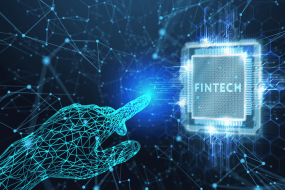In our developer‑lore, we’ve built CRMs the “good old way”: relational DBs, forms, workflows, dashboards, reports, perhaps some email‑integrations, maybe (if we got fancy) reminders or alerts. But the arrival of AI‑First CRM is forcing us to rethink more than just UI polish.
In this post, we explore what distinguishes AI‑First CRM from Traditional CRM, why it matters deeply for developers, and what changes we should brace ourselves for over the next ten years.
Traditional CRM vs AI‑First CRM
Traditional CRM systems are built around deterministic logic: rules engines, handcrafted workflows, fixed data schemas, explicit triggers.
They scale by adding servers, optimizing DB indices, sometimes sharding, and tweaking UI. Predictability is high. Maintainability is moderate, complexity tends to creep in.
AI‑First CRM systems, in contrast, use machine learning (ML), natural language processing (NLP), predictive analytics, conversational agents, reinforcement learning even.
We’re talking systems that adapt, anticipate, and drift (in a good way) based on usage patterns, customer behavior streams, external signals.
The logic is probabilistic; uncertainty is baked in. Data schema may flex; models may retrain; feedback loops matter.
Why Developers Should Care Now?
We once built a small internal CRM for a startup (yes, our “first big mistake,” perhaps). We hard‑coded edge‑case after edge‑case—e.g. “if lead score > 80 but no contact in 30 days, send escalated email.”
That felt smart. But then the product evolved, behavior changed, data volume exploded. That rule became a liability.
If we had had predictive lead scoring, anomaly detection, dynamic prioritization (i.e. some AI‑First features), we might have saved ourselves many midnight bug hunts.
Developers must care now because:
- Scale of data is growing (social, usage, engagement, unstructured inputs). Traditional rules break when inputs are messy.
- Expectations from users are rising (chatbots, smart suggestions, automated task assignments). If we deliver just dashboards, we lag.
- Competitive pressure: many vendors (Salesforce, HubSpot, Microsoft, niche players) are embedding AI. If you build without AI capabilities, you risk being legacy before your first major version ships.
Key Technical Differences We’ll Be Dealing With
Below, we list critical areas where AI‑First will force (or perhaps inspire) new practices and architecture changes, relative to Traditional CRM.
Data Architecture: From Rigid Schemas to Flexible, Stream‑Driven Models
Traditional CRM: normalized relational tables, strict schema migrations, nightly batch jobs.
AI‑First CRM: pipelines for streaming data (clicks, social media, voice transcripts), semi‑structured or unstructured data (text, audio, images), feature stores, model inputs.
Developers will need to master tools like Kafka, data lakes, vector embeddings, kennisgraphs, etc. Schema evolution becomes a living thing, not a dreaded migration.
Model Lifecycle Management
Traditional CRM logic lives in code: workflows, if‑then, scheduled scripts. Testing is unit/integration, deployments relatively straightforward.
AI‑First CRM demands model versioning, A/B testing, continuous retraining, drift detection, validation. We’ll need DevOps′ cousin: MLOps. Monitoring for bias, fairness, performance. Developers must become comfortable with non‑deterministic behaviors, setting up guardrails.
User Interfaces and User Experience (UX)
Traditional: forms, lists, filters, reports. UX changes slowly. AI‑First: natural language queries (“Show me leads likely to churn next week”), conversational UIs, adaptive dashboards, proactive alerts.
Developers need familiarity with NLP libraries, embedding’s, context windows, summarization: making “smart” feel seamless. Users will expect suggestions—“Here’s what you might want to do next”—and if it feels dumb, they reject it.
Privacy, Security, and Compliance Will Move from Afterthoughts to Core Features
With AI, we touch personal data, behavioral data, possibly sensitive content. Traditional CRMs often had datasets but less unpredictable inference.
AI‑First means predictions about people: risk of bias, legal exposure (GDPR, CCPA, newer laws), data minimization, transparency.
Developers must build auditing, explanations (“Why did this lead score get this value?”), opt‑outs, secure handling of raw and model data.
Performance, Latency, and Infrastructure Costs
Training and inference (especially real‑time) are expensive. Traditional workflows often accept batch delays; dashboards updated nightly.
AI‑First demands more: real‑time scoring, streaming analytics. Infrastructure for GPUs or specialized hardware (TPUs, inference servers), caching, scalable model serving, fallback paths when models fail. Developers must architect for both freshness and reliability.
Integrations, APIs, and Extensibility
Traditional CRM: many external integrations but often built case‑by‑case. API design tends to be REST or SOAP, mapping fixed fields.
AI‑First: need for richer APIs (allowing probability scores, embeddings, feature vectors), possibly shared model endpoints (e.g. recommendation engines).
Integration with external AI services (OpenAI, Hugging Face, cloud ML), ability to plug in new models.
Developers must think modular, versioned, with clear contracts; ideally, model‑agnostic layers.
The Cultural & Organizational Shift
It’s not just code. We recall when our team had to shift mindset: rules weren’t enough, so we held brown‑bag sessions about model bias, data drift.
Non‑engineers (sales, marketing) needed education: trusting predictions, understanding that confidence < 100% doesn’t mean “wrong.” Developers become translators: between data scientists, ops, business stakeholders. Collaboration becomes even more critical.
What Skills Developers Should Build / Sharpen
- Familiarity with ML fundamentals: supervised, unsupervised, reinforcement learning; over fitting, under fitting; metrics beyond accuracy (precision, recall, AUC, etc.).
- Experience with data engineering: pipelines, ETL/ELT, data lakes, streaming.
- Knowledge of NLP & embedding’s: transformer models, vector search.
- Understanding of MLOps / model deployment pipelines: CI/CD for models, monitoring, drift detection.
- Strong foundation in privacy, ethics, legal constraints: GDPR, fairness, transparency.
- Exposure to real‑time systems: event‑driven architectures, latency constraints.
- Soft skills: ability to communicate model uncertainty, translate business goals into model metrics.
Common Roadblocks & How We Can Avoid the Potholes
- Over engineering too soon: Spinning up complex ML pipelines when simple heuristics would suffice. Avoid by validating business value first.
- Data quality issues: Dirty, sparse, biased data wrecks AI. We once launched a predictive lead‑scoring model that favored leads from older customers because new segment data was missing. Lesson: invest in clean, representative data early.
- Lack of monitoring and feedback loops: Models drift; user behavior changes. Without feedback, an AI system degrades quietly (and then loudly, when complaints are loud).
- User mistrust: If model is opaque, suggestions wrong, or bias visible, users reject it. Developers must build transparency (logs, explainability), allow overrides.
- Scalability costs: Cloud bills can surprise. Real‑time inference, embedding storage, vector search—these cost. Budget early.
What the Next Decade Might Look Like (Yes, We’re Predicting)
- AI‑First CRMs will embed conversational agents that don’t just answer queries, but anticipate them (“Hey—you haven’t contacted these hot leads; want me to prepare outreach drafts?”).
- Hybrid human‑AI workflows, where AI handles suggestion, humans act, but feedback loops from humans continuously improve models.
- Widespread use of zero‑trust, privacy‑preserving AI: federated learning, differential privacy, encrypted inference.
- More open model marketplaces: developers choosing or training models, swapping them out, tuning for niche industries.
- CRM as platform of platforms: structured so that third‑party model plug‑ins, data sources, embeddings, etc. integrate easily—so modularity wins.
- Possibly regulation will catch up: legal frameworks for algorithmic transparency, fairness, AI audited features—developers will need to under‑the‑hood compliance baked in.
How to Begin Transitioning Now (We’ve Got to Start Somewhere)
- Begin by identifying where heuristics or rules are failing—e.g., customer churn, lead scoring, prioritization—and assess whether a small ML model could help.
- Build minimal pipelines for logging user behavior: clicks, interactions, outcomes.
- Prototype with off‑the‑shelf models or cloud APIs to gauge value before building everything.
- Instrument everything: metrics, model performance, user satisfaction.
- Set up architecture that isolates model‑specific logic: so models can be swapped, retrained without massive code rewrites.
- Educate teams: data scientists, product managers, engineering all need to understand trade‑offs (latency vs accuracy, transparency vs performance).
Why Not All CRMs Will Become AI‑First Immediately (and That’s Okay)
- Some businesses will be fine with traditional CRMs for a while:
- For small volume businesses, simple rule‑based workflows work and are cost‑efficient.
- In heavily regulated industries, risk of deploying AI (explainability, liability) may slow adoption.
- For organizations with legacy systems, technical debt may make wholesale shifts expensive.
What Developers Should Ask Their Stakeholders
- What are the business pain points? Which errors are costly: false positives, false negatives, delayed action?
- What volume of data do we have (or will we have)? Enough to train meaningful models?
- What is acceptable latency? Do we need real‑time, near real‑time, or batch?
- How much transparency must we provide to end‑users/regulators?
- What is the maintenance plan? Who owns model retraining, monitoring?
- What resources (compute, engineers, ML capacity) are available vs what is needed?
Conclusion
A custom CRM software company that’s already straddling the bridge between Traditional CRM and AI‑First CRM in practice.
AI‑First CRM vs Traditional CRM isn’t just a buzzword battle—it’s a fundamental shift in how we architects, developers, and businesses think about customer relationships. Traditional CRMs taught us structure, reliability, and the value of clear rules. AI‑First CRMs challenge us to embrace uncertainty, adaptivity, data ethics, and continuous learning. If we build AI into our CRM’s bones rather than tacking it on, we’ll be ready for the next decade.





